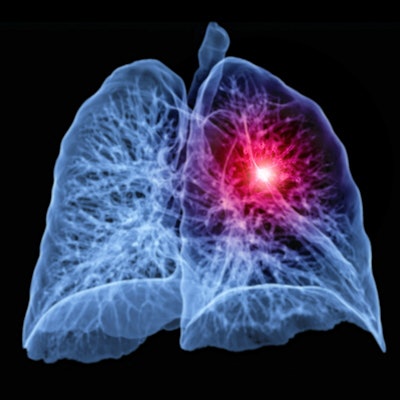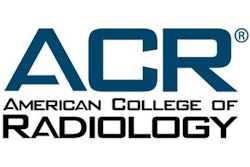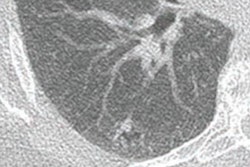
The Lung-RADS framework for categorizing nodules found on lung cancer screening is useful but should be regularly reevaluated, according to a study published online January 26 in the American Journal of Roentgenology.
This is particularly important when it comes to nodules categorized as 3 (probably benign) or 4 (suspicious for malignancy), noted a team led by Dr. Dexter Mendoza of Icahn School of Medicine at Mount Sinai Hospital in New York City.
"Lung-RADS may yield different results when applied in clinical practice rather than research settings," the group wrote. "Continued revision is warranted to optimize the system's utility."
The American College of Radiology (ACR) released the Lung-RADS metric in 2014 in an effort to standardize recommendations for managing lung nodules found on screening CT, Mendoza and colleagues noted; the system was revised in 2019. Lung-RADS category 3 and 4 nodules make up most screen-detected cancers, and when identified are marked as "actionable nodules" that require management. But how often these nodules are actually malignant may depend on the setting in which the system is used.
The researchers sought to explore the frequency of cancer among lung nodules categorized as Lung-RADS 3 or 4 at lung cancer screening, as well as any factors that might affect cancer frequency in each category. They evaluated radiology reports from 9,148 low-dose CT lung cancer screening exams performed in 4,798 patients between June 2014 and January 2021. The group further analyzed any Lung-RADS 3 or 4 (includes 4A, 4B, and 4X) nodules categorized as benign or malignant, taking nodule size and type into account.
Of the total number of lung cancer screening exams, 857 (9.4%) were categorized as Lung-RADS 3 and 721 (7.9%) as Lung-RADS 4. There were 1,297 unique nodules out of the total 9,148. Of these unique nodules, 85.4% were benign and 14.6% were malignant. The researchers found the following malignancy incidence in Lung-RADS category 3 and 4 nodules:
- Category 3: 3.9%
- Category 4A: 15.5%
- Category 4B: 36.3%
- Category 4X: 76.8%
In terms of imaging findings, Mendoza and colleagues detected a cancer frequency of 13.1% among solid nodules, 24.4% among part-solid nodules, and 13.5% among ground-glass nodules.
The frequency of Lung-RADS category 3 and 4 nodules and the frequency of cancer in these categories were "higher than prevalence and cancer risk estimated for category 3 and 4 nodules in the Lung-RADS recommendations," they wrote.
Why? The study's higher malignancy risk percentages could be due to specific characteristics of the screening population included, the group wrote. Or it could be that previous studies "underestimated the true prevalence of Lung-RADS category 3 and 4 nodules," they noted.
What's the takeaway? The Lung-RADS system needs to be regularly evaluated in light of clinical practice, according to Mendoza and colleagues.
"Future Lung-RADS iterations should consider these findings from real-world practice to improve the system's clinical utility," they concluded.





















